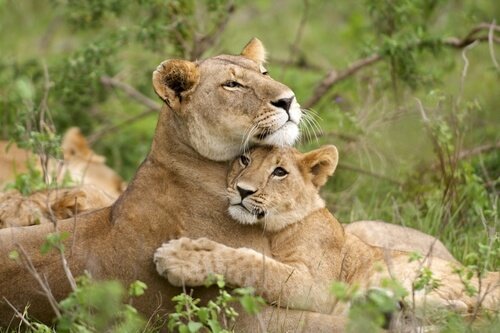The Wild Tiger: The Comeback of the Century

The wild tiger is a protected species that dwells in the forests between Russia and Vietnam. Its population had declined in past years. However, there’s excellent news: this species has been increasing considerably in number in recent years.
What is the reason for this comeback in recent years? The answer is due to the collaboration between NGOs and governments.
Why the wild tiger population has increased in number?
For several years, conservationists have promoted the conservation of the wild tiger, because it’s a very precious animal in the eastern hemisphere.

This increase may be due to census improvement in India, Nepal, and other countries. Also, according to WWF, it’s due to the expansion of preservation systems for this species.
Marco Lambertini, general director of the WWF, said that for the first time in the 30 years this species has been dropping in number. So the close collaboration between governments, NGOs, and local communities were needed to preserve tigers.
Obviously, this isn’t the result of one day, but of joint, continuous work over several years. Now we can see a remarkable result.
What is the outcome?
There seemed to be no hope for the wild tiger when the last known census (so far) was taken in 2010, recording only 3200 tigers. It was then it was decided that they needed to take action and do something to preserve the species.
In the latest census in 2016, the figure rose to 3890. This is a considerable increase in about six years, considering that until then, the number did nothing but continue to decline.
The census went public on Monday before the prime minister of India, Narendra Modi, who attended and inaugurated the 3rd Asia Ministerial Conference on Tiger Conservation. This meeting, in which the wild tiger played an essential role, took place on Tuesday, April 12, 2016.
What is the objective of the Conference on Tiger Conservation?
In 2010, steps were taken to preserve this species by creating a process that consisted on setting a goal called “TX2”. The goal was to double the wild tiger population in all the areas in which they lived during a period of 12 years. Or, in other words, by 2022.
As part of this process, about three years later, the Asia Ministerial Conference on Tiger Conservation was created. In the conference, different leaders from Asia would meet each year to come on to an agreement on making improvements and working towards reaching the “TX2” goal.
However, it seems as though this Conference will be special. That’s because the initiative’s leader, Michael Baltzer of the WWF, has stated that if they want to reach the “Tx2” goal, they must create an ambitious, strong plan that not only manages to stop the decline, but also will double the number of wild tigers, and give them a safe place to live.
Why is the wild tiger disappearing?

The wild tiger is disappearing for two reasons: poaching, and the loss of their habitat. In Southeast Asia, it could also be due to lack of government effort to save the wild tiger.
Like many animals, the tiger doesn’t run away from the damage caused by humans. They suffer either directly by hunting, or indirectly, with climate change.
According to recent reports, poaching has taken the life of an estimated 1590 tigers between 2010 and 2014. Unfortunately, this has contributed to the huge reduction of the species.
This text is provided for informational purposes only and does not replace consultation with a professional. If in doubt, consult your specialist.